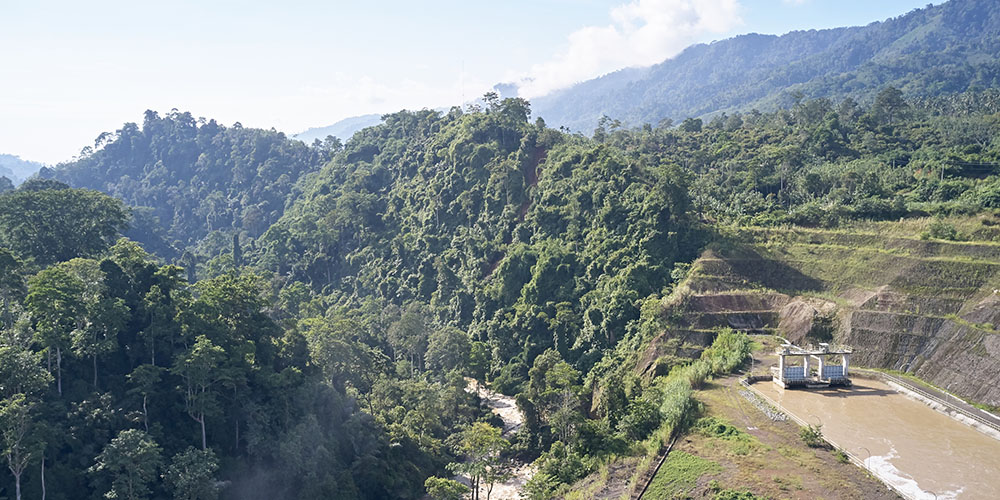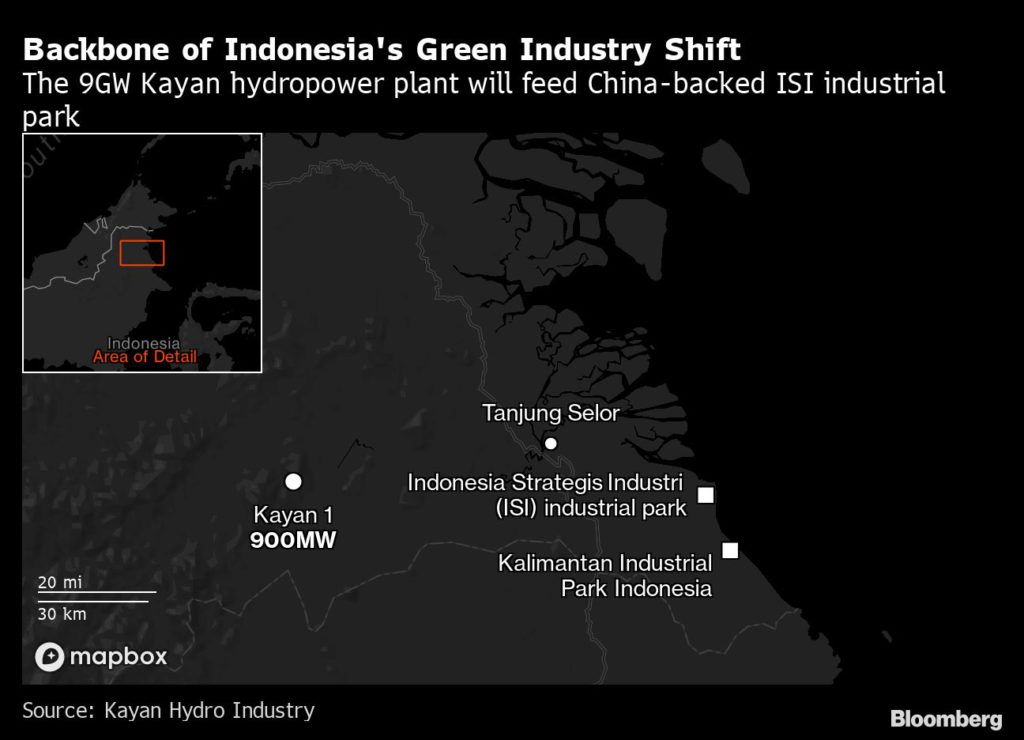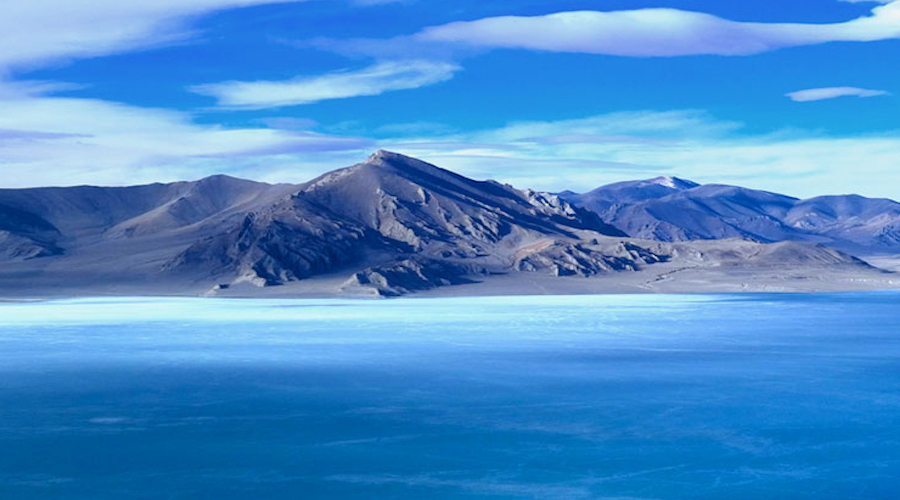Eight-year dam delay hinders Indonesia’s move away from coal

Deep in Borneo’s jungle, a $17 billion hydropower project touted as the backbone of Indonesia’s green industry ambition is struggling to take off.
Kayan Hydro Energy, which counts China Power Investment Corp. as an investor, kicked off the project in 2014 at a groundbreaking event attended by top Indonesian military and government officials. Powered by five dams, the plant would supply 9,000 megawatts of electricity to an industrial park being built nearby. It would make it the biggest hydropower plant in Southeast Asia.
Eight years on, not a single dam has been built and only part of the road leading to the site has been completed. Slow permit approvals and initial refusals from residents to give up their land have led to construction delays and higher costs, said Chief Executive Officer Andrew Suryali.

These issues highlight the challenges facing the developing countries in attracting renewable energy investment to wean off coal, which remains abundant and cheaper in the world’s largest exporter of the dirtiest fuel. In Kayan’s case, such delays would necessitate the construction of a new temporary coal-fired plant in North Kalimantan province.
“We kept being ping-ponged back and forth” during the approval process, Suryali said in August during a media briefing in Tanjung Selor in Kalimantan, about 2,475 kilometers north of Jakarta. “Our hope is to finish first so they don’t need to build that coal plant after all. We can be 100% green.”
The case also exposes the limitation of Indonesia’s new Job Creation Law in speeding up approvals, despite its promise for being pro-business, as more rules need to be issued or amended to comply with the new legislation.
Hydropower is the biggest source of clean energy and it can be used whenever it’s needed, similar to fossil fuels. Indonesia however will need to tap its entire 75-gigawatt hydropower potential – enough to meet the whole archipelago’s demand – to be able to shutter all its coal-fired plants and reach a target for net-zero emissions by 2060.
Kayan Hydro spent no less than a decade to secure the site in the forest, which was chosen by the company’s founder as an ideal location to build the plant. But various permits are needed to utilize the forest and to negotiate land acquisitions with local residents who feared that promised jobs at the site wouldn’t come through if they give up farming and sell their land.
In addition, the company said the permit process was set back when North Kalimantan split from East Kalimantan to become a new province in 2012, while changes to investment regulations in 2019 meant it had to request approval from a different agency for the project.
No phone coverage
Kayan Cascade, as the plant is called, is to be built on the eponymous 28,600 square kilometer watershed that is largely comprised of primary and secondary forests, a home to hornbills, honey bears, leopards, as well as the indigenous Dayak tribe.
To build the first dam, the company needs to clear 170 hectares of land to connect to the nearest highway, inundate two villages and relocate 150 families further inland.
Chief Operating Officer Khaerony told reporters in early October that the process to draw a relocation plan was held up because it needed more time to convince the residents. As a result, the provincial government couldn’t issue the permit.
To be sure, Coordinating Minister for Economic Affairs Airlangga Hartarto said that Kayan Hydro has basically secured the key approvals, with the remaining being “just operational matters.”
Abnormal condition
A hydropower plant needs five to six years to complete under normal conditions, said Surya Darma, former chair of the Indonesian Renewable Energy Society. “If conditions are abnormal, it will take longer so there’s no certainty that all these permits can be finished in a year, which makes things worse,” Darma said.
The project funding, which the company is lining up, consists of 75% of bank loans and 25% equity, according to Suryali. So far, the company has spent 2 trillion rupiah ($130m) on the project. Sumitomo Corp. said on Oct. 6 it agreed to lead a syndicated financing for the project, pending a due diligence. The Japanese firm also intends to bring in its own contractors to speed up development.
Potential buyers
Kayan Cascade is the biggest project under the Indonesian government’s Renewable Energy Based Industry Development plan, which entails building green industrial parks in remote locations to support the country’s transition to its emission goal. President Joko Widodo often cites the Kayan project whenever he talked about the program. The other projects in the plan are much smaller, under 1,000MW.
The electricity from Kayan would feed the Indonesia Strategis Industri (ISI) green industrial park, which is designed to run entirely on renewable energy. At least seven Chinese-Indonesian joint ventures plan to set up shops there, including nickel producer Shandong Xinhai Technology Co Ltd.
Suryali said that Kayan Hydro has a deal with the park’s tenants to synchronize the construction of their factories with his hydropower plant. ISI is slated to welcome its first factories in 2025-2026 when the first dam at 900MW begins feeding electricity. However, the industrial park also has plans to build a temporary coal-fired power plant to feed demand while waiting for the hydropower plant to complete.
“Every year we obtain a different permit. They never issued them all at once,” said Suryali. He now hopes to start building the first dam next year, once it secures the explosives permit from the police, with the whole complex seen up and running by 2035.
(By Norman Harsono)
{{ commodity.name }}
{{ post.title }}
{{ post.date }}

Comments